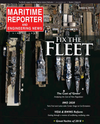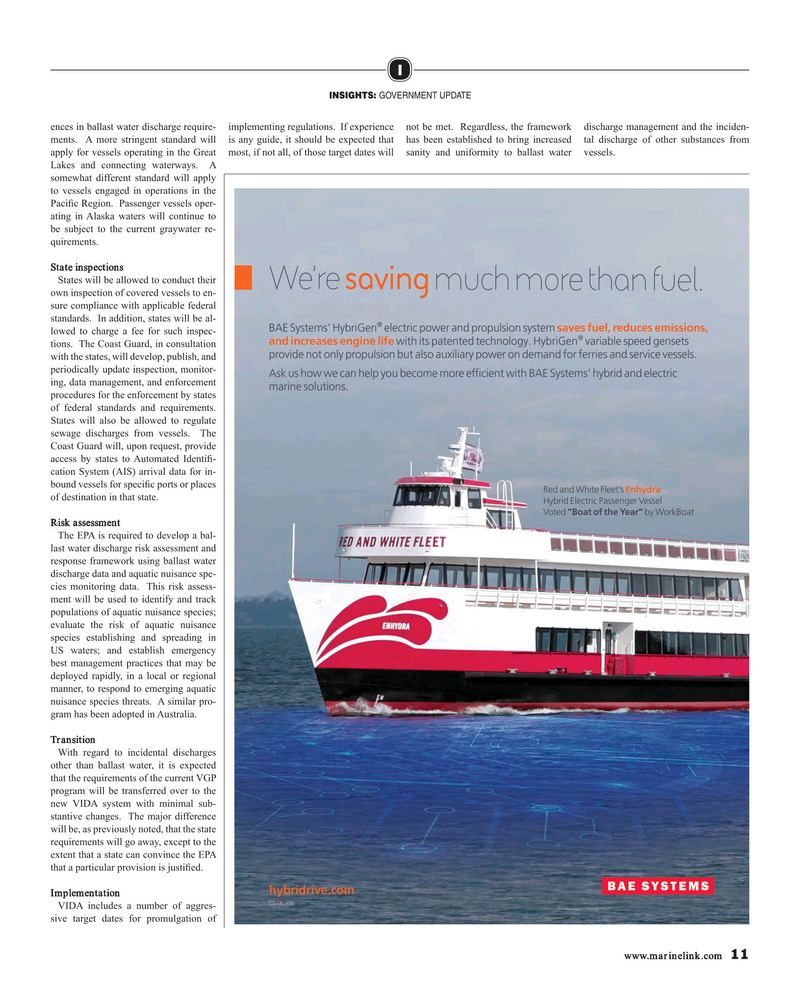
Page 11: of Maritime Reporter Magazine (January 2019)
Ship Repair & Conversion: The Shipyards
Read this page in Pdf, Flash or Html5 edition of January 2019 Maritime Reporter Magazine
I
INSIGHTS: GOVERNMENT UPDATE ences in ballast water discharge require- implementing regulations. If experience not be met. Regardless, the framework discharge management and the inciden- ments. A more stringent standard will is any guide, it should be expected that has been established to bring increased tal discharge of other substances from apply for vessels operating in the Great most, if not all, of those target dates will sanity and uniformity to ballast water vessels.
Lakes and connecting waterways. A somewhat different standard will apply to vessels engaged in operations in the
Paci? c Region. Passenger vessels oper- ating in Alaska waters will continue to be subject to the current graywater re- quirements.
State inspections
States will be allowed to conduct their own inspection of covered vessels to en- sure compliance with applicable federal standards. In addition, states will be al- lowed to charge a fee for such inspec- tions. The Coast Guard, in consultation with the states, will develop, publish, and periodically update inspection, monitor- ing, data management, and enforcement procedures for the enforcement by states of federal standards and requirements.
States will also be allowed to regulate sewage discharges from vessels. The
Coast Guard will, upon request, provide access by states to Automated Identi? - cation System (AIS) arrival data for in- bound vessels for speci? c ports or places of destination in that state.
Risk assessment
The EPA is required to develop a bal- last water discharge risk assessment and response framework using ballast water discharge data and aquatic nuisance spe- cies monitoring data. This risk assess- ment will be used to identify and track populations of aquatic nuisance species; evaluate the risk of aquatic nuisance species establishing and spreading in
US waters; and establish emergency best management practices that may be deployed rapidly, in a local or regional manner, to respond to emerging aquatic nuisance species threats. A similar pro- gram has been adopted in Australia.
Transition
With regard to incidental discharges other than ballast water, it is expected that the requirements of the current VGP program will be transferred over to the new VIDA system with minimal sub- stantive changes. The major difference will be, as previously noted, that the state requirements will go away, except to the extent that a state can convince the EPA that a particular provision is justi? ed.
Implementation
VIDA includes a number of aggres- sive target dates for promulgation of www.marinelink.com 11
MR #1 (10-17).indd 11 MR #1 (10-17).indd 11 1/11/2019 10:18:30 AM1/11/2019 10:18:30 AM

 10
10

 12
12
